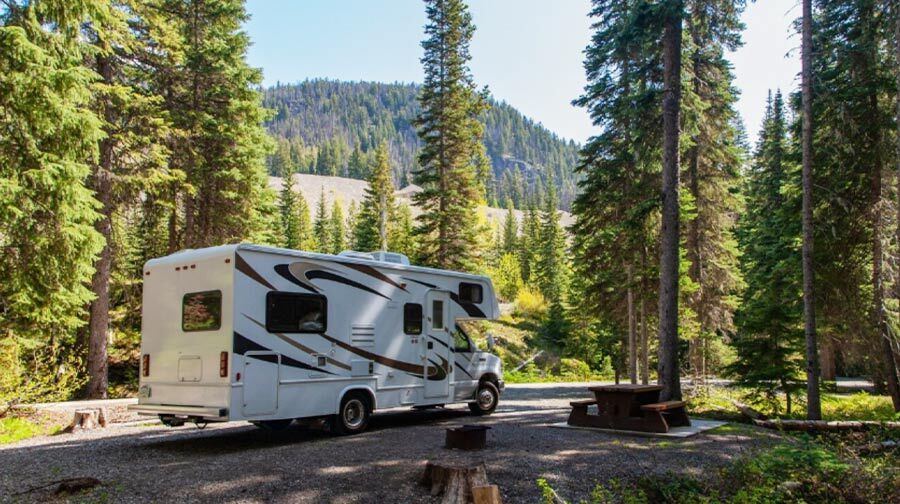Starting a self storage business can be a highly profitable investment, offering long-term financial stability and growth potential.
However, like any business venture, there are numerous challenges that can impede success if not carefully navigated. From selecting the wrong location to failing to plan for future expansion, these missteps can significantly affect your profitability and ability to compete in the market.
To ensure your facility thrives and remains competitive, it’s essential to avoid common mistakes. By taking the time to research, plan, and implement the right strategies from the outset, you can position your business for lasting success and avoid costly setbacks down the road.
1. Naming Your Business After a Specific Location
While incorporating your town’s name into your business branding might initially seem like a great way to establish a strong local presence, but it can become a significant limitation if you decide to expand beyond that area.
A name tied to a specific location may make it harder to attract customers in other regions or create the impression that your services are limited to one area.
To future-proof your business, opt for a flexible and scalable name that allows for growth into multiple locations without requiring a costly rebrand down the line.
2. Failing to Plan for Future Expansion
If your facility becomes successful, limited space for expansion can quickly become a roadblock to further growth. This is especially crucial for container storage sites, where additional units require adequate land and strategic placement to maintain accessibility and efficiency. Without proper planning, you may find yourself facing costly rearrangements, disruptions to operations, or even the need to relocate entirely.
To prevent these challenges, consider potential future growth from the outset by selecting a location with ample room for expansion, designing a layout that allows for scalability, and securing any necessary permits in advance. Proactive planning will save time, money, and logistical headaches down the road.
Check out our guide on starting a container self storage business.
3. Poor Site Selection
Before committing to a location for your self storage facility, conduct a thorough analysis of local demand, competition, and demographics to ensure long-term success.
Start by researching the population density, economic activity, and growth trends in the area to determine whether there is a strong need for storage services. Assess the presence and pricing of competing facilities, if the market is oversaturated or dominated by well-established brands, it may be difficult to attract customers.
Additionally, consider the site's visibility and accessibility. A facility located in a low-traffic area, hidden from main roads, or difficult to reach due to poor infrastructure can struggle to attract walk-in customers and drive-by traffic and lead you to solely rely on your marketing efforts. Easy access, proximity to residential and commercial hubs, and good road connections can make a significant difference in occupancy rates.
Investing time in selecting the right location upfront will help you avoid costly mistakes and maximize your facility’s profitability in the long run.
Check out this video for expert tips on choosing the ideal location for your business.
4. Ignoring Dynamic Pricing
Failing to implement dynamic pricing based on demand can result in significant revenue loss and missed opportunities for growth. Without a flexible pricing strategy, you may find yourself underpricing units during peak demand periods, leaving money on the table, or overpricing them during slow seasons, leading to prolonged vacancies.
By regularly analyzing market trends, occupancy rates, competitor pricing, and seasonal demand fluctuations, you can adjust your rates accordingly to maximize profitability.
Stora's dynamic pricing automatically adjusts rates based on occupancy, ensuring optimal pricing year-round. Increase prices during high-demand periods like summer and holidays, and offer competitive rates or promotions during slower months to maintain steady occupancy.
Check out our quick guide to self storage revenue management optimization to maximize revenue while balancing customer demand and operational efficiency.
5. Neglecting Digital Marketing
Neglecting to invest in SEO, Google My Business, and paid advertising can severely limit your facility’s visibility, making it difficult for potential customers to find you online. In today’s digital age, most people turn to search engines like Google when looking for self storage options, and if your business doesn’t appear at the top of search results, you’re likely losing customers to competitors who have optimized their online presence.
A well-executed SEO strategy ensures your website ranks higher in search results for relevant keywords, driving organic traffic and increasing inquiries. Claiming and optimizing your Google My Business profile helps your facility appear in local searches and on Google Maps, making it easier for customers to locate and contact you.
Additionally, running targeted paid ads allows you to reach potential renters quickly, especially in competitive markets.
Discover this in-depth guide to Self Storage SEO: Expert Strategies for Success, along with 12 Essential Tips For Effective Self Storage Marketing to learn how to boost brand awareness, attract more leads, and achieve long-term business success.
6. Inadequate Security Measures
Security is a top priority for self storage customers, as they want to ensure their belongings are safe from theft, vandalism, and damage. A facility with poor security, such as missing surveillance cameras, inadequate lighting, or weak gate access, can deter customers, increase insurance risks, and expose your business to potential liability issues.
A well-secured storage facility should include high-quality surveillance cameras covering all key areas, including entry points, hallways, and parking lots, with footage stored securely for review if needed. Bright, strategically placed lighting enhances visibility at night, deterring criminal activity and making customers feel safer when accessing their units after dark.
Additionally, secure gate access with personalized entry codes, keycards, or mobile app-based authentication prevents unauthorized individuals from entering the premises.
Choosing the right smart access control system is key to protecting your tenants and improving their experience, check out our top 9 systems and find the right solution for you.
7. Overlooking Zoning Laws and Regulations
Some areas have strict zoning regulations that may prohibit self storage businesses altogether or impose specific restrictions that can make development challenging and expensive. Local governments may require facilities to be located in designated commercial or industrial zones, limiting available properties.
Additionally, zoning laws might mandate costly modifications such as enhanced landscaping, architectural design requirements, or additional parking spaces to comply with community standards.
Some regions also have restrictions on the height of buildings, unit sizes, or outdoor storage, which could impact your facility’s layout and profitability. In certain cases, obtaining special permits or variances may be necessary, which can be a lengthy and costly process.
To avoid unexpected expenses or legal roadblocks, thoroughly research local zoning laws, building codes, and permit requirements before purchasing land or signing a lease.
8. Poor Drainage and Flood Protection
Poor site drainage can result in significant issues for a self storage facility, particularly when it comes to water damage. If water isn't properly diverted away from storage units, it can seep into the building, damaging items inside and compromising the integrity of the facility. This can lead to costly repairs, such as replacing flooring, repairing walls, or even replacing inventory for customers who experience water damage.
To prevent these issues, it's essential to ensure that your site is designed with proper drainage systems that effectively channel water away from the facility. This could include sloped driveways, well-placed gutters, drainage ditches, and French drains. Incorporating flood prevention measures such as raised foundations or flood barriers can further protect the facility in areas prone to heavy rainfall or flooding.
Taking these precautions not only protects the property but also reassures potential customers that their items will be safe, which can help boost occupancy rates and build a strong, trustworthy reputation.
9. Using Outdated Booking Systems
Relying on manual or outdated booking systems for managing self storage operations can lead to a host of problems, including inefficiencies, and a subpar customer experience.
Manual systems often involve a lot of paperwork, phone calls, and spreadsheets, all of which are prone to human error and can quickly become disorganized. This increases the risk of double-booking units, creating frustration for both customers and staff, and leading to lost revenue or customer dissatisfaction.
Instead, investing in modern self storage management software like Stora can streamline operations and eliminate these issues. Stora can automate the booking process, manage reservations in real time, and provide accurate, up-to-date information on unit availability.
Features like online payment processing, automated reminders, and customer management tools can enhance the overall customer experience, making it easier for customers to rent, pay, and access their units.
10. Limited Unit Sizes and Rental Terms
A lack of variety in unit sizes and flexible rental terms can significantly restrict your customer base and limit your facility's ability to meet the diverse needs of potential renters.
Different customers have varying storage requirements, from individuals looking to store a few boxes to businesses needing to store large amounts of inventory or equipment. Without offering a range of unit sizes, you may miss out on attracting customers who need something larger or smaller than what’s available.
Furthermore, offering flexible rental terms is just as important. Some customers may need storage for a short period, such as a few weeks during a move, while others might need longer-term solutions for seasonal storage or business purposes.
By providing a variety of rental options, such as month-to-month leases or discounted rates for long-term rentals, you can cater to both short-term and long-term customers.
11. Inadequate Insurance Coverage
Failing to offer tenant insurance or properly insure your property can expose your business to major financial risks. Without insurance, you could face significant costs in the event of theft, fire, or damage to customers' belongings, and potentially liability claims.
Offering tenant insurance protects both your customers’ items and your business from liability, while proper property insurance safeguards your building and equipment. Prioritizing insurance not only protects your business but also builds customer trust, ensuring long-term success.
12. Lack of Mobile & Online Presence
As customer expectations evolve, more and more people expect seamless online booking, digital payments, and mobile-friendly communication. If your facility doesn’t offer these modern conveniences, you risk losing customers to competitors who provide better technological experiences.
To stay ahead, ensure your website is user-friendly and optimized for conversion. With Stora, you can access expertly designed self storage website templates, complete with essential pages that are structured for clarity and easy navigation to maximize user engagement.
Take advantage of free storage photos and unit diagrams from Stora’s image library to give your website a polished, professional look. Create user-friendly forms effortlessly with built-in, customizable options designed to capture leads and fill your sales funnel.
Quickly and easily create a professional-quality website, specifically designed for the self storage industry, and publish it with minimal effort, with Stora.
13. Poor Pricing Strategy
Setting rental rates too high or too low without conducting thorough market research can have a negative impact on your business.
If your rates are too high, you risk pricing yourself out of the market and driving potential customers to competitors. On the other hand, if your rates are too low, you may struggle to cover your costs and miss out on maximizing profitability.
It's crucial to analyze local market trends, competitor pricing, and current demand to set competitive rates that align with what customers are willing to pay, while still ensuring you generate adequate revenue. By doing so, you can strike the right balance, attract more customers, and optimize your facility’s financial performance.
Check out our quick guide to self storage revenue management optimization.
Conclusion
Starting a self storage business can be a highly rewarding venture, but it’s essential to avoid common mistakes that could hinder your success.
By carefully selecting your business name, planning for expansion, choosing the right location, and offering modern amenities, you can set yourself up for long-term profitability. Investing in advanced technology like dynamic pricing, digital marketing, and modern booking systems, along with ensuring proper security, insurance, and mobile-friendly services, will help you stay ahead of the competition and attract more customers.
Ready to elevate your self storage business? Discover Stora, your all-in-one tool for self storage revenue management.
Without effective revenue management, you risk missing out on profitable opportunities, increasing operating costs, and losing your competitive edge.
With Stora, you can:
✔️ Streamline your operations.
✔️ Enhance the customer experience.
✔️ Implement strategic pricing.
✔️ Automate your facility management.
✔️ Get real-time data on key performance metrics like revenue.
Our suite of integrated features, such as online sales, inventory management, and business insights contribute to more efficient revenue optimization.
One of our clients, Blockspace, achieved full occupancy and turned a healthy profit in just five months using our comprehensive software. Within weeks, they were online, selling units to students and managing their revenue through our solution.
Book a free Stora demo today and learn how we can help you maximize your revenue and run a highly profitable self storage facility.






